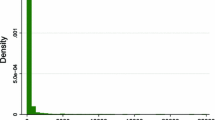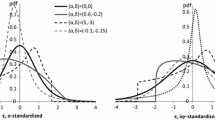Abstract
In a time when most post-secondary educational institutions must distribute limited resources more efficiently, segmentation analysis affords a way to direct planning to yield strategic benefits. The Automatic Interaction Detector is recommended to the institutional research community as an analytical tool for effectively identifying distinctive subgroups within an educational market. In this application, AID is used to segment the Boston College applicant pool according to subgroups' relative probabilities of enrolling. The findings illustrate that AID can make a useful contribution to market research and that the technique has broader applicability—to other student groups and to other educational policy questions.
Similar content being viewed by others
References
Fielding, A. Binary segmentation: the automatic interaction detector and related techniques for exploring data structure. In C. A. O'Muircheartaigh and C. Payne (Eds),The analysis of survey data, Vol. 1. New York: Wiley, 1977.
Institute for Research in Social Behavior. Retirement plans and related factors among faculty at COHFE institutions. Report for Consortium on Financing Higher Education, 1980.
Institute for Social Research.OSIRIS III Release 2 Edition. Ann Arbor: University of Michigan, 1973.
Litten, L. Market structure and institutional position in geographic market segments.Research in Higher Education 1979, 2, 59–83.
Maguire, J., and Lay, R. S. Modeling the college choice process: image and decision.College and University 1981,57 123–139.
Morgan, J. N., and Sonquist, J. A. Problems in the analysis of survey data: and a proposal.Journal of the American Statistical Association 1963,58 414–434.
Sonquist, J. A.Multivariate model building: the validation of a search strategy. Ann Arbor, Michigan: Institute for Social Research, 1970.
Strommen, M. P. A survey of images and expectations of LCA colleges. Research report to the Joint Committee of the Division for Mission in North America and the Council of LCA Colleges, 1976.
Whittstruck, J., and Inguanzo, J. Research report to Nebraska Post-Secondary Education Commission, 1980.
Author information
Authors and Affiliations
Rights and permissions
About this article
Cite this article
Lay, R., Maguire, J. & Litten, L. Identifying distinctive groups in a college applicant pool. Res High Educ 16, 195–208 (1982). https://doi.org/10.1007/BF00973583
Received:
Issue Date:
DOI: https://doi.org/10.1007/BF00973583




